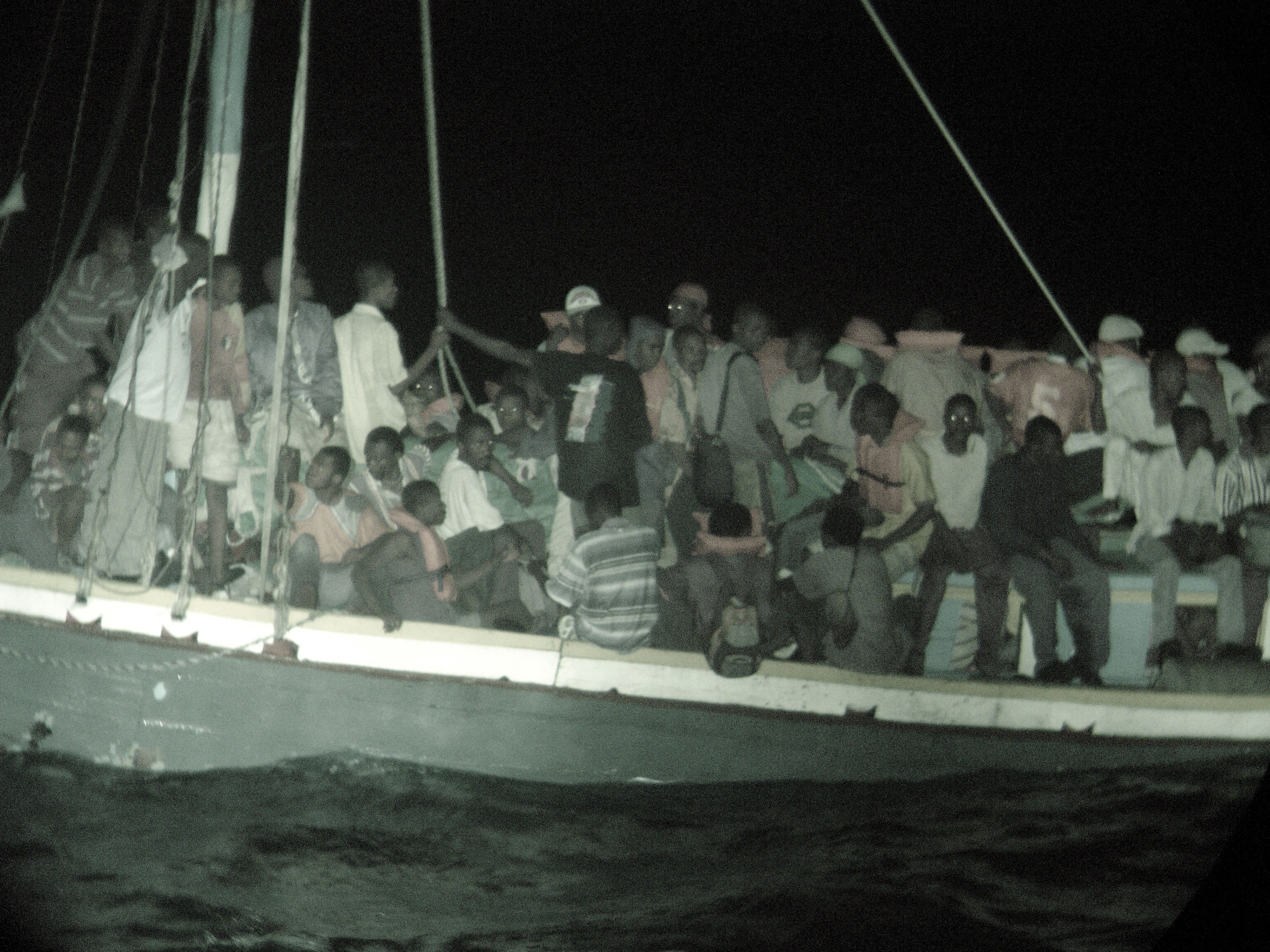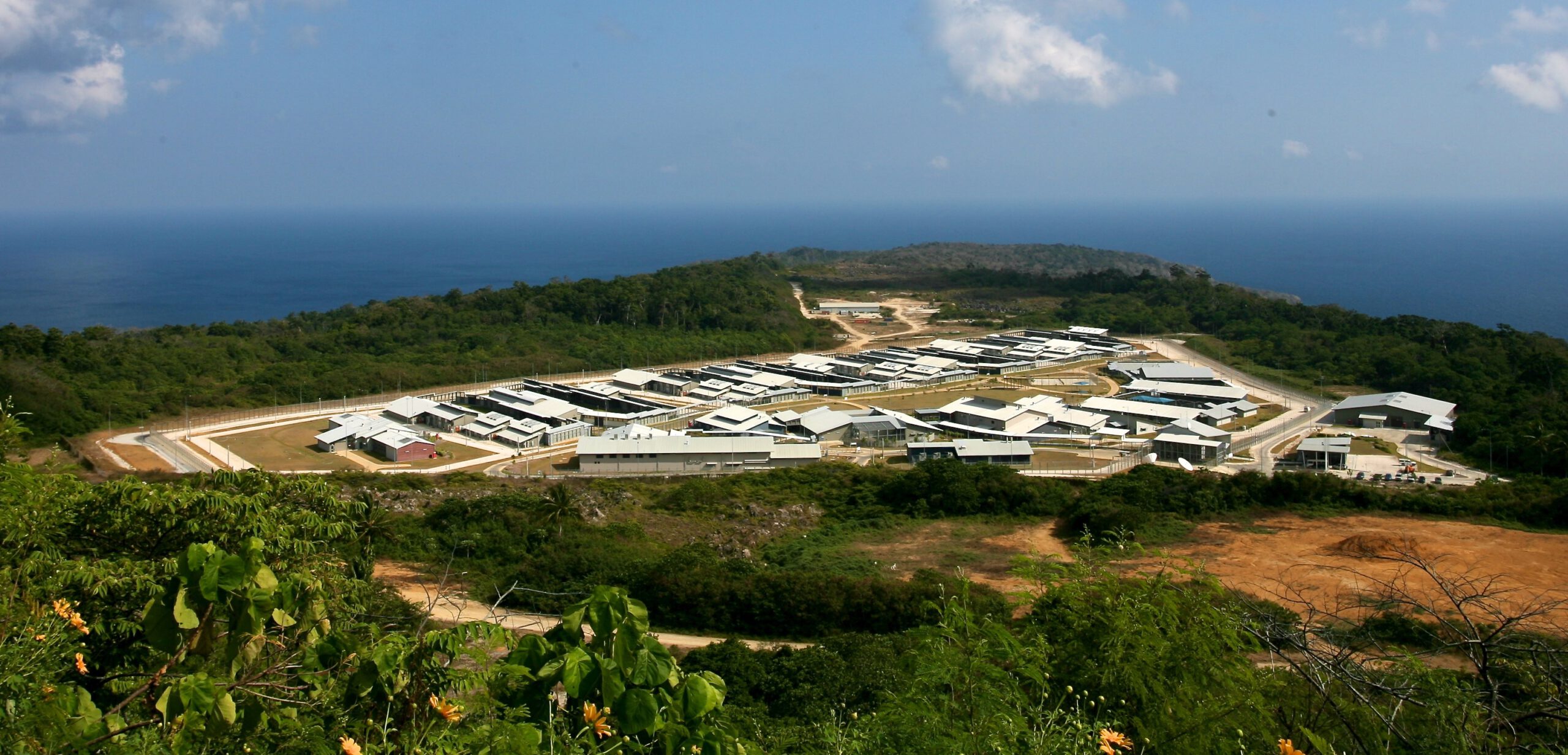In this two part article, Erin Wilson examines the Australian Government's approach to ayslum seekers and considers the role the church should play in caring for those fleeing persecution. You can find the second part here.
The recent passage of legislation to excise the entire Australian mainland from the migration zone is unprecedented in many respects.1 To begin with, it is the first time that a signatory to the United Nations Refugee Convention has excised its territory. In practical terms, the legislation means that an asylum seeker who arrives on any part of Australian territory by boat will be moved to detention in Nauru or Papua New Guinea, and the processing of their claims will be frozen for an unknown period under Australia’s ‘no advantage’ principle.2 It sets a dangerous precedent amongst signatories to the Refugee Convention and legal experts fear that if other countries follow Australia’s example, the international asylum system could fall apart.
While the legislation to excise the mainland was only recently passed, the no advantage principle has essentially been in operation since last August, when the Houston report recommendations were released.3 The Houston report was the culmination of the work of an expert panel providing advice to the Labor government on “the best way forward for Australia to prevent asylum seekers risking their lives on dangerous boat journeys to Australia.”4 This is a second way in which the excision of the mainland is unprecedented – it has been justified through the preservation of life. While the Liberal-National Coalition used discourses of illegality, exclusion and “queue jumping” to legislate the excision of Australia’s islands in 2001 and 2005, the Labor Party has introduced the argument that this policy move is necessary to save lives.
 Former Minister for Immigration Chris Bowen originally opposed the plan to excise the mainland by the Howard government in 2006, stating it would be a “stain on our national character”. However, he has since changed his mind about the policy, because it would “save lives” and the government is prepared to do “what it takes to save lives”.5
Former Minister for Immigration Chris Bowen originally opposed the plan to excise the mainland by the Howard government in 2006, stating it would be a “stain on our national character”. However, he has since changed his mind about the policy, because it would “save lives” and the government is prepared to do “what it takes to save lives”.5
Senator Matt Thistlethwaite makes the same argument:
“Fifty innocent women and children drowned in shocking circumstances before the eyes of this nation on the rocks at Christmas Island. We simply cannot allow, as a nation with a heart, those circumstances to continue.”6
In essence, the argument the government is making is that by preventing people from being able to claim asylum if they arrive by boat, they will think twice before paying a people smuggler and undertaking a life-threatening sea voyage.
Saving lives or saving face?
On the surface, this language appears consistent with liberal cosmopolitan perspectives about responsibilities to preserve the lives of others. However, there are several problematic assumptions in this logic. Firstly, it assumes that, whatever situation an asylum seeker is facing in their country of origin or country of transit, it is not as bad as either being incarcerated indefinitely in an Australian immigration detention centre, or potentially dying at sea. Recent statistics show, however, that over 90% of recent asylum seekers who have arrived in Australia by boat have been found to be refugees.7 This is not a recent turn of events either. Consistently, 70-97% of all boat arrivals have been found to meet the international criteria for refugee status.8 If the majority of people who are arriving in Australia by boat are refugees, this means that they are fleeing persecution and are in fear of their lives. Discouraging them from undertaking a life-threatening sea voyage and instead to remain in a life-threatening situation in their country of origin, or undertake a life-threatening journey elsewhere, in the long run does little to actually “save lives”. All it may do is prevent people from dying in a place where we can see them. This is a revealing part of Senator Thistlethwaite’s argument: “before the eyes of this nation”. Perhaps what the government is really keen to do is to avoid loss of life that we can see. This suggests that it is the sensibilities of the Australian public that the government is concerned about, not the actual lives of the asylum seekers themselves.
A second point that raises questions over the government’s desire to save lives are the recent changes to the foreign aid budget, changes made in order to fund the increased need for immigration detention as a result of the new “no advantage principle”. In August last year, the Labor government announced that it would divert AU$3 billion over four years from its foreign aid budget to fund the reopening of offshore detention centres for asylum seekers in Nauru and Manus Island.9 This move makes Australia the third largest recipient of its own foreign aid.10 The need for the detention centres is a problem that stems from the distinction that successive governments have chosen to make between asylum seekers who arrive by plane and asylum seekers who arrive by boat. Asylum seekers that arrive by plane are placed in community care while the claim is processed, a much more humane and cost-effective approach, while those that arrive by boat are placed in immigration detention.11 Yet detention centres are costly, both in economic and human terms, with devastating physical and psychological impacts for the asylum seekers detained there.12 This raises serious questions about the kind of “life” that we are preserving through the no advantage policy.13
Foreign aid is a critical component of combatting poverty, disease and state failure that can lead to violent conflict and persecution, just a few of the circumstances that create the need to seek asylum to begin with. A key component of campaigns such as Make Poverty History, the Micah Challenge and the achievement of the UN Millennium Development Goals by 2015 has been to encourage developed countries to raise their foreign aid to 0.7% of gross national income. Australia’s current commitment level is just 0.37%.14 If we were to truly believe that the government was interested in saving lives, regardless of where those lives happened to be and whether we could see them or not, then it would seem more reasonable to increase foreign aid spending, utilize community care rather than immigration detention for asylum seekers and thereby reduce the need for detention centres, given how economically inefficient they are and the detrimental impacts they have on the health and well-being of asylum seekers.
Faith and Asylum
There is a need to rethink how governments value “life” in their policies and perhaps also how our understanding of life determines who belongs and who doesn’t, who is worthy of assistance and who is not. And it is here where I think Christianity, alongside the views and experiences of other religions such as Islam, Judaism, Buddhism and Hinduism, can contribute much to rethinking how we approach asylum and protection in contemporary global politics. Christianity has a proud history of offering sanctuary, asylum and protection to the vulnerable stranger. Given the current state of asylum politics and governance, there is arguably a need for Christians and members of other religions with traditions of asylum and protection, to promote these traditions more visibly in the public sphere and challenge the right of the state to define what constitutes a life and which lives matter more than others. Jesus said he came that they may have life and have it in abundance (John 10:10), yet that is not the kind of life that is currently offered by dominant approaches to asylum by sovereign states.
By this suggestion I am not ignoring the role that religions have played in exclusion and violence against vulnerable others. At the same time, though, alongside these violent and exclusionary histories, there are also strong traditions of compassion, protection, peace and justice. What I am trying to suggest is that religious perspectives have something to contribute to rethinking how we offer protection, that a conversation amongst religious and secular perspectives on the value of life and our responsibilities to one another can contribute to the development of more creative and compassionate alternatives to dominant asylum policies.
Erin Wilson is the Director of the Centre for Religion, Conflict and the Public Domain, Faculty of Theology and Religious Studies, University of Groningen
1. http://www.theage.com.au/opinion/political-news/mainland-excised-from-australias-migration-zone-20130516-2joee.html ↩
2. The legislation only applies to asylum seekers who arrive by boat without a valid visa. Those that arrive by plane without a valid visa are processed under the established procedures for “lawful” arrivals, as in asylum seekers who arrive with a visa. ↩
3. Jo Knight and Julian Burnside, 22 May 2013, http://www.youtube.com/watch?v=k-iunDJ5wPQ&feature=share ↩
4. http://expertpanelonasylumseekers.dpmc.gov.au/report ↩
5. Cullen, Simon. 2012. “Bowen defends migration policy rethink” ABC News 31 October 2012. Available at http://www.abc.net.au/news/2012-10-31/bowen-defends-migration-about-face/4343970 Accessed 16 May 2013 ↩
6. Barlow, Karen and staff, 2013. “Parliament excises mainland from migration zone” ABC News 16 May 2013. Available at http://www.abc.net.au/news/2013-05-16/parliament-excises-mainland-from-migration-zone/4693940 Accessed 16 May 2013. The gender dimensions of the argument are also intriguing. By specifically mentioning women and children, the nation is positioned as the (masculine) rescuer and defender of vulnerable (feminine, weak) lives. ↩
7. http://www.smh.com.au/opinion/political-news/overwhelming-majority-of-boat-arrivals-deemed-to-be-refugees-20130519-2juty.html ↩
8. For specific statistics by nationality, see Philips, Janet. 2013. “Asylum seekers and refugees: What are the facts” Available at http://www.aph.gov.au/About_Parliament/Parliamentary_Departments/Parliamentary_Library/pubs/BN/2012-2013/AsylumFacts#_Toc348096468 Accessed 16 May 2013 ↩
9. http://www.acfid.asn.au/media/media-releases/aid-agencies-warn-against-misuse-of-aid-for-detention-centres ↩
10. http://www.theaustralian.com.au/national-affairs/foreign-affairs/carrs-aid-shift-a-cut-bishop/story-fn59nm2j-1226539449670 ↩
11. Australian migration has made a distinction between asylum seekers who arrive by plane and those that arrive by boat since the early 1990s, when the policy of mandatory detention was introduced. Asylum seekers who arrive by plane, in general, possess valid visas (tourist, student or business) meaning that under Australian law they enter the country “legally” and then claim asylum once they arrive. These asylum seekers are put into community care, giving them access to various social welfare support services and the capacity to work and study to a certain degree. Asylum seekers who arrive by boat do not have visas and often have no identity papers of any kind, meaning that under Australian law they enter the country “illegally”. These asylum seekers are placed in immigration detention centres while their asylum claim is processed. The law in Australia is not consistent with international human rights conventions, which claim the right to seek and enjoy asylum for everyone, regardless of mode of entry, and is a point of significant contention for refugee advocates. ↩
12. For further information on the cost of running detention centres and their negative impacts see http://idcoalition.org/wp-content/uploads/2009/06/casemanagementinaustralia.pdf See also a recent commentary from Time regarding how the asylum seeker policy is contributing to the national deficit http://world.time.com/2013/05/14/australias-harsh-asylum-seeker-policy-is-a-staggeringly-expensive-failure/#comments ↩
13. http://www.theage.com.au/opinion/political-news/mainland-excised-from-australias-migration-zone-20130516-2joee.html ↩
14. http://www.micahchallenge.org.au/blog/n/australias-aid-budget-2013-14-delayed-diverted-but-still-doing-good-130514 ↩